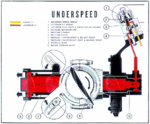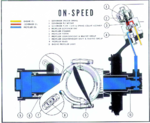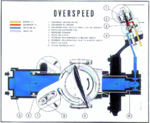Hi all - I am looking for information about the operation of Rotol and DeHavilland constant speed propellers fitted to Spitfires and Hurricanes. At this point I'm mainly interested in the three blade models, but I assume the operation was similar for the others. Specifically, what provided the force to increase or decrease propeller pitch?
I understand that the D.H. used counterweights and oil pressure, but did the oil pressure work to increase, or decrease pitch? And the same for the counterweights - which direction did they act on the blades?
I know less about the Rotol other than that oil pressure was involved, and that supposedly the governing mechanism was more responsive. But did oil pressure act both to increase and decrease pitch, or were there other mechanisms like a spring or counterweight?
Thanks for any help,
Dan
I understand that the D.H. used counterweights and oil pressure, but did the oil pressure work to increase, or decrease pitch? And the same for the counterweights - which direction did they act on the blades?
I know less about the Rotol other than that oil pressure was involved, and that supposedly the governing mechanism was more responsive. But did oil pressure act both to increase and decrease pitch, or were there other mechanisms like a spring or counterweight?
Thanks for any help,
Dan



